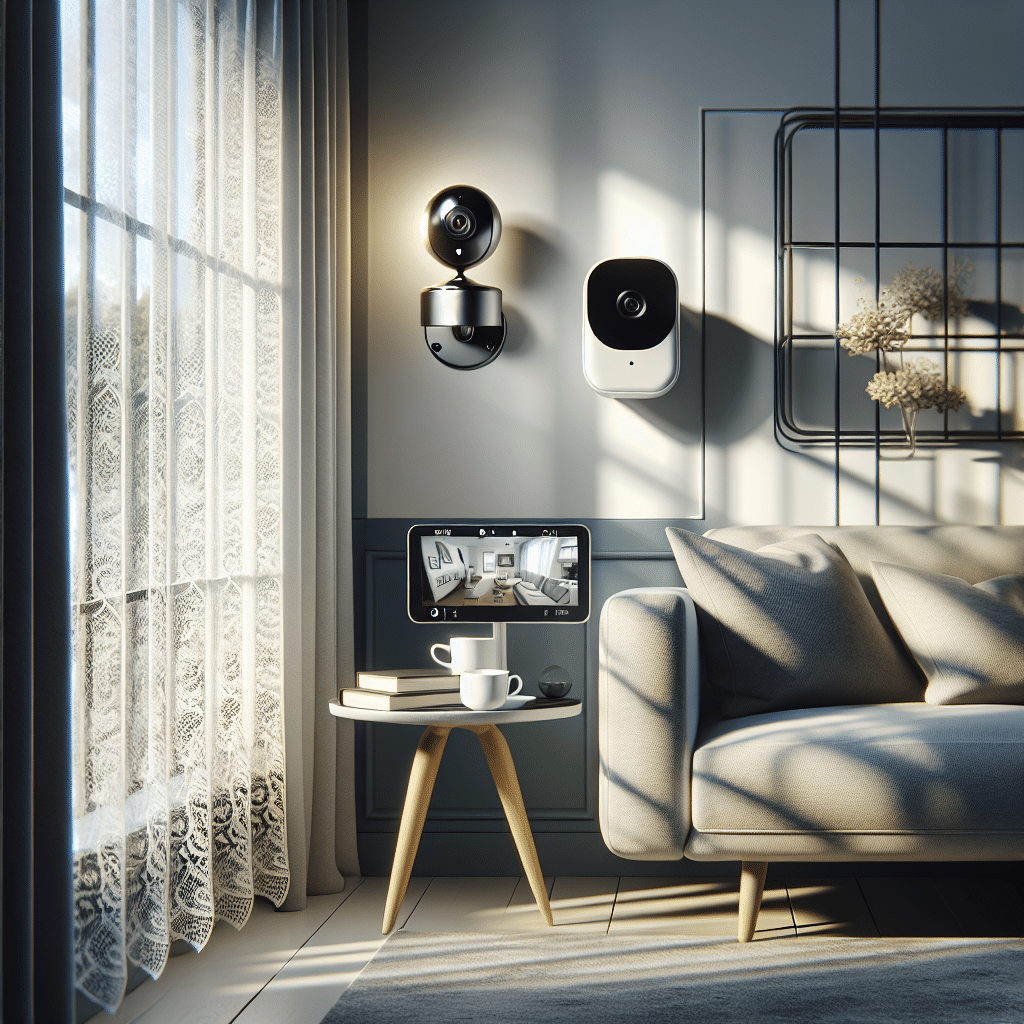Understanding Wireless Security Cameras for Indoor Use
The Functionality of Wireless Security Cameras
Wireless security cameras have evolved to become integral components of home security systems. Indoor models are designed specifically to monitor areas such as living rooms, hallways, and nurseries. These cameras connect to your home Wi-Fi network, enabling real-time video streaming and recording. Their primary functions include monitoring, alerting owners to unusual activity, and sometimes, even two-way audio communication.
Key Features to Look for in Indoor Wireless Security Cameras
-
Video Quality: Look for cameras with at least 1080p HD resolution for clear video images. Some advanced models offer 4K resolution, enhancing clarity even further and allowing users to zoom in on critical details without losing quality.
-
Field of View (FOV): A wider field of view allows a single camera to cover more area. Cameras with FOV ranging from 120 to 180 degrees can capture almost an entire room.
-
Night Vision: Many indoor wireless security cameras come equipped with infrared night vision, allowing them to operate effectively in low-light conditions. Look for models that offer a clear, detailed nighttime view.
-
Motion Detection and Alerts: Advanced wireless cameras are equipped with motion detection sensors capable of sending instant notifications to your smartphone when movement is detected. This feature adds a layer of convenience and security.
-
Two-Way Audio: This feature allows users to not only hear audio from their camera but also communicate through it. This is useful if you want to interact with pets or children while away from home.
-
Cloud Storage Options: Many indoor wireless security cameras come with cloud storage, allowing users to store footage securely off-site. Look for services that offer flexible storage solutions, from free trials to paid subscriptions.
-
Integration with Smart Home Devices: Ensure compatibility with smart home ecosystems like Amazon Alexa, Google Home, or Apple HomeKit. This allows you to control your camera through voice commands or a centralized app.
Types of Indoor Wireless Security Cameras
-
Dome Cameras: These cameras are dome-shaped and ideal for ceiling mounting. They’re less obtrusive and provide a wider angle of view compared to other designs.
-
Bullet Cameras: Bullet-style cameras are typically elongated and mounted on walls. They are great for targeted monitoring but can be more visible.
-
PTZ Cameras (Pan-Tilt-Zoom): PTZ cameras can be remotely controlled to pan, tilt, and zoom, offering flexibility in monitoring large indoor spaces. They are particularly useful in commercial settings or for extensive home layouts.
-
Fisheye Cameras: Fisheye models provide a 360-degree view but may create distortion at the edges of the image. They are beneficial for spaces where complete coverage is desired.
-
Nanny Cams: Specifically designed for monitoring children or pets, nanny cams often feature a more discreet design and can include additional functionalities like lullabies or movement detection alerts.
Installation and Placement Tips
-
Strategic Placement: Consider where to install your camera for the best coverage. Common locations include entry points, playrooms, and areas with valuable items.
-
Height and Angle: Install cameras at an elevated position with an angle that captures the most activity. Avoid placing them too high, as this could limit their effectiveness for facial recognition.
-
Wi-Fi Connectivity: Ensure your camera is within range of your Wi-Fi router to maintain a stable connection. Consider using Wi-Fi extenders if needed.
-
Power Supply: While wireless cameras reduce the need for extensive wiring, they may still require power. Look for battery-operated options or those that can be plugged into an outlet for continuous power.
Privacy and Security Concerns
When utilizing wireless security cameras, users must prioritize privacy. Ensure that any camera systems you choose are secured with strong passwords. Regularly update firmware to protect against vulnerabilities. Additionally, verify that the camera does not infringe on the privacy of neighbors or within shared spaces.
Cost Considerations
Indoor wireless security cameras vary widely in price, ranging from budget-friendly models under $50 to high-end options priced at several hundred dollars. Factors such as video quality, features, and brand reputation influence price. It’s essential to balance cost against features and reliability before making a purchase.
Popular Brands and Models
Some notable brands in the indoor wireless security camera market include:
-
Ring: Known for its video doorbells, Ring also offers indoor cameras that integrate seamlessly with other smart devices.
-
Nest: Part of Google’s ecosystem, Nest cameras deliver exceptional video quality and easy integration with smart systems.
-
Arlo: Arlo cameras are known for their wireless capabilities, flexibility, and excellent night vision features.
-
Wyze: With budget-friendly options that still offer a range of features, Wyze has become popular for indoor monitoring.
-
Logitech Circle: This camera is designed for easy setup and provides excellent live streaming along with user-friendly mobile applications.
Conclusion
Investing in an indoor wireless security camera system enhances home security and provides peace of mind. By understanding the critical features, types, installation practices, privacy considerations, and potential costs, consumers can make well-informed decisions that suit their individual needs and ensure their homes are safe and secure. Whether monitoring for security breaches or keeping an eye on loved ones, wireless cameras serve a vital role in modern home security systems.
